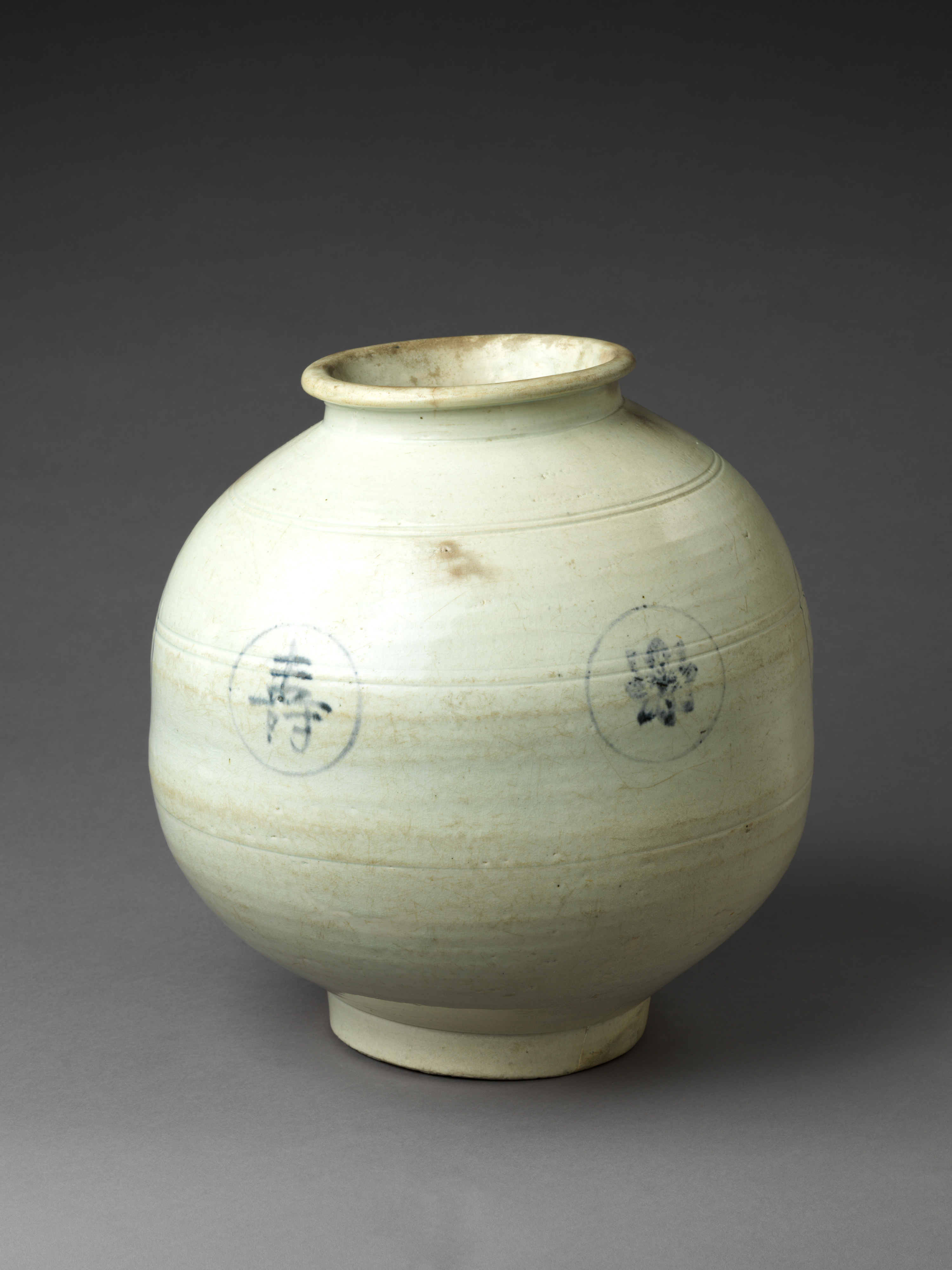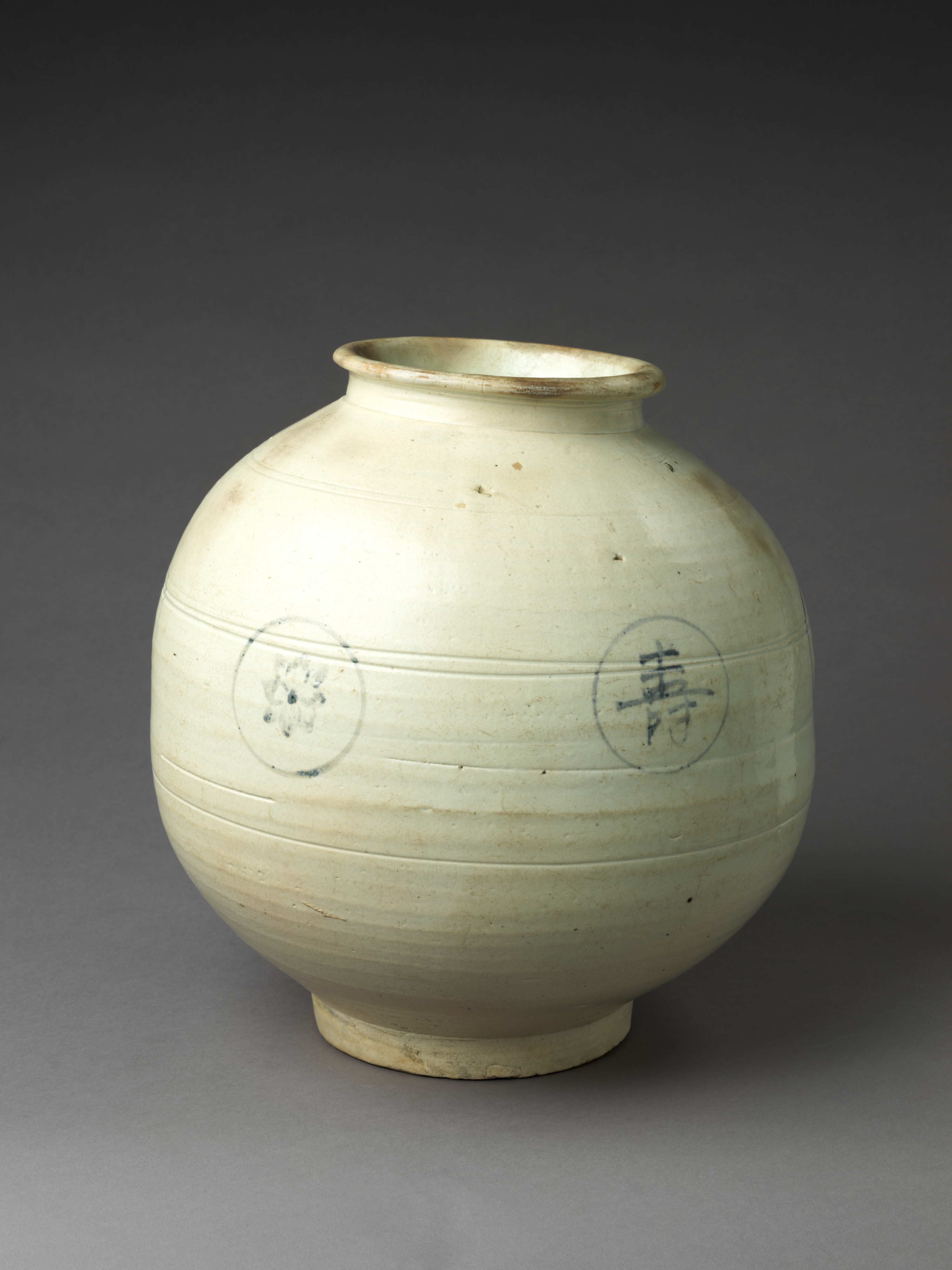Jar with floral roundels and inscriptions
Resembling a moon jar in shape and production method, this vessel is similarly formed by fusing two hemispheres. While its size and asymmetry exude the same unaffected charm that has made moon jars national icons, it is distinguished by its surface decoration. Cobalt-blue roundels with alternating floral and calligraphic motifs appear slightly above the central seam. The characters convey auspicious wishes for longevity (壽, su) and blessings (福, bok). The cobalt-blue reflects the popularity of blue-and-white porcelain in the nineteenth century. Purportedly collected by the Japanese potter Shimaoka Tatsuzo (1919–2007), jars like this played a part in the development of Japanese mingei aesthetics and philosophy, which celebrated everyday objects made by ordinary people.
Due to rights restrictions, this image cannot be enlarged, viewed at full screen, or downloaded.
This artwork is meant to be viewed from right to left. Scroll left to view more.





